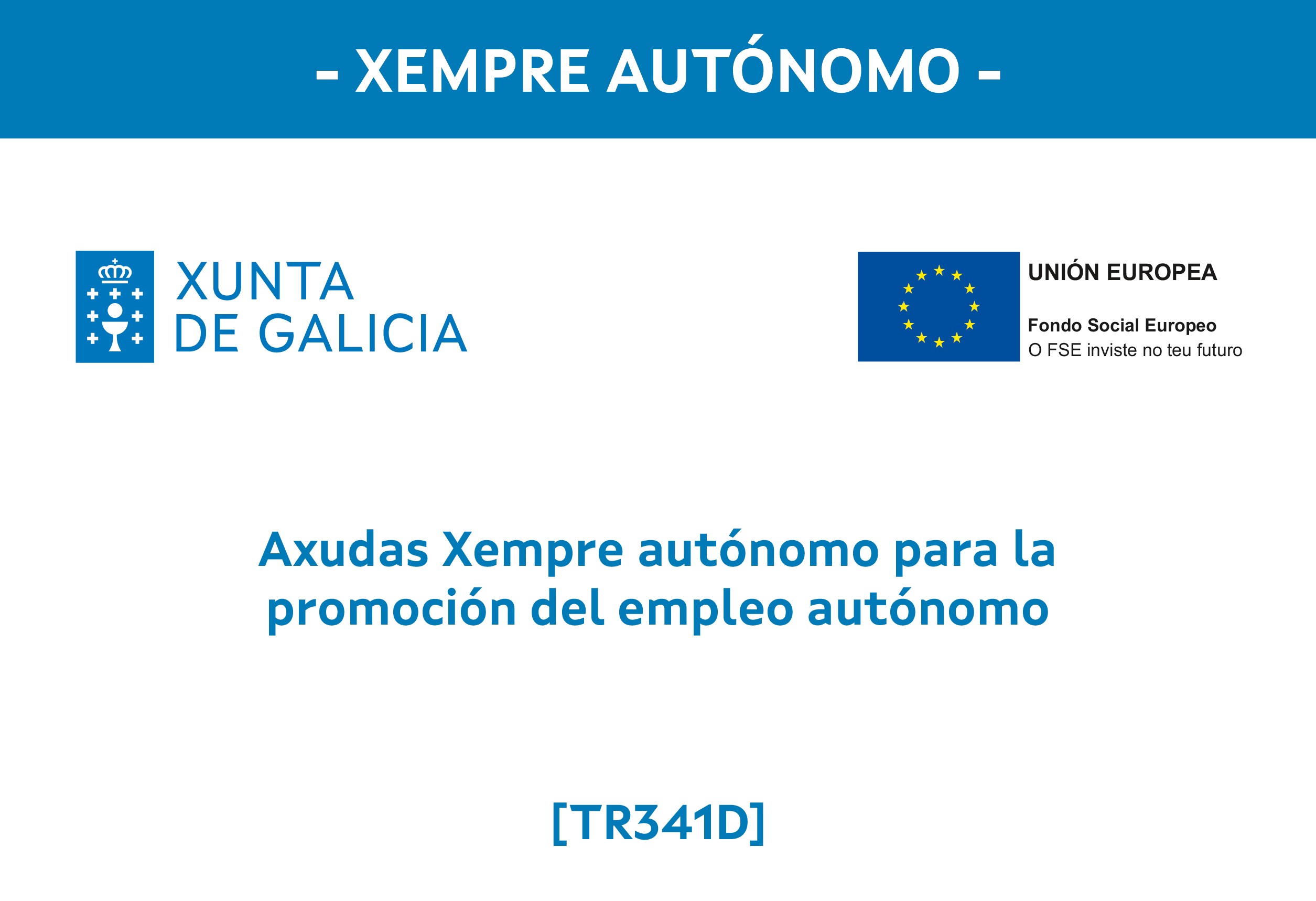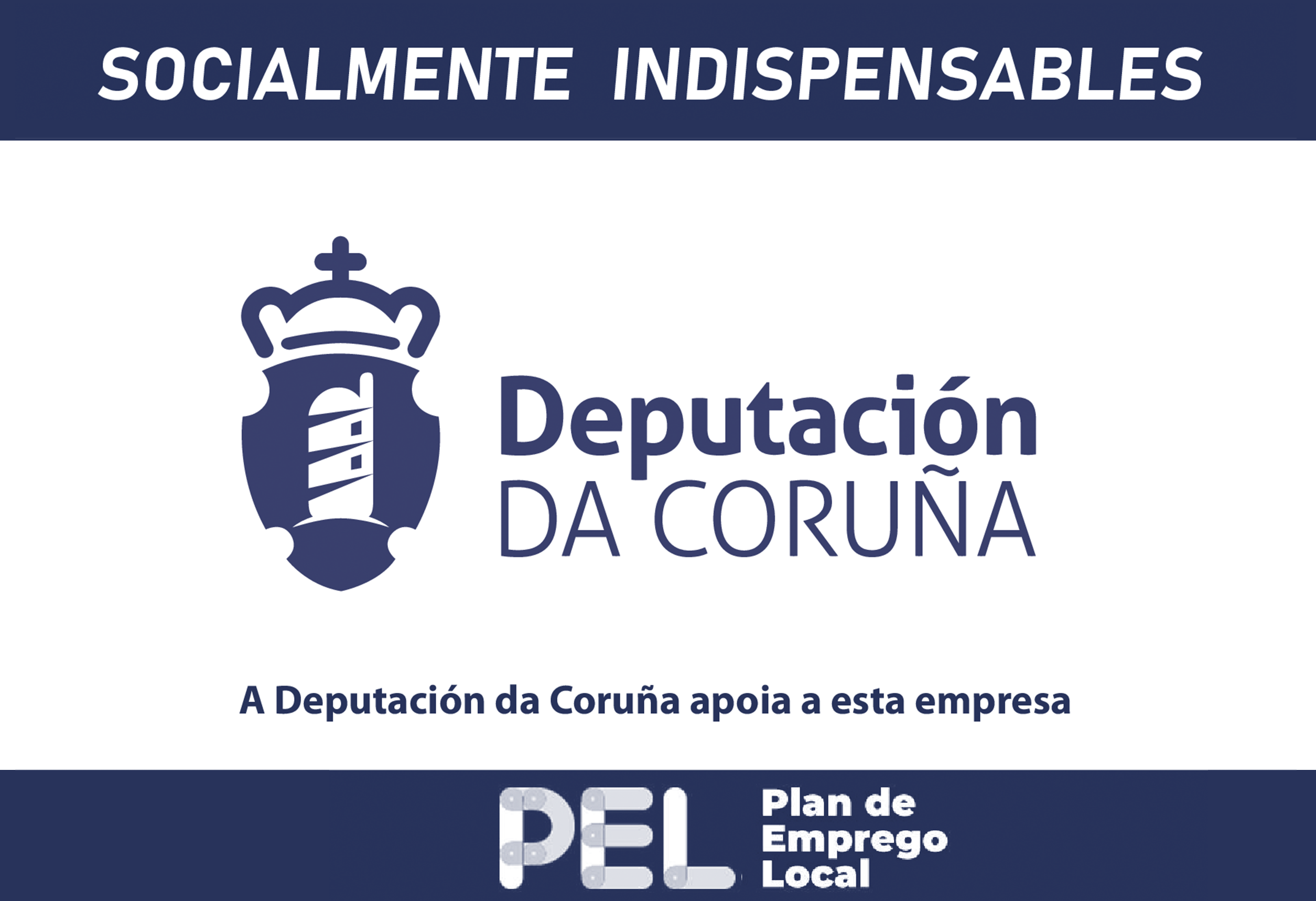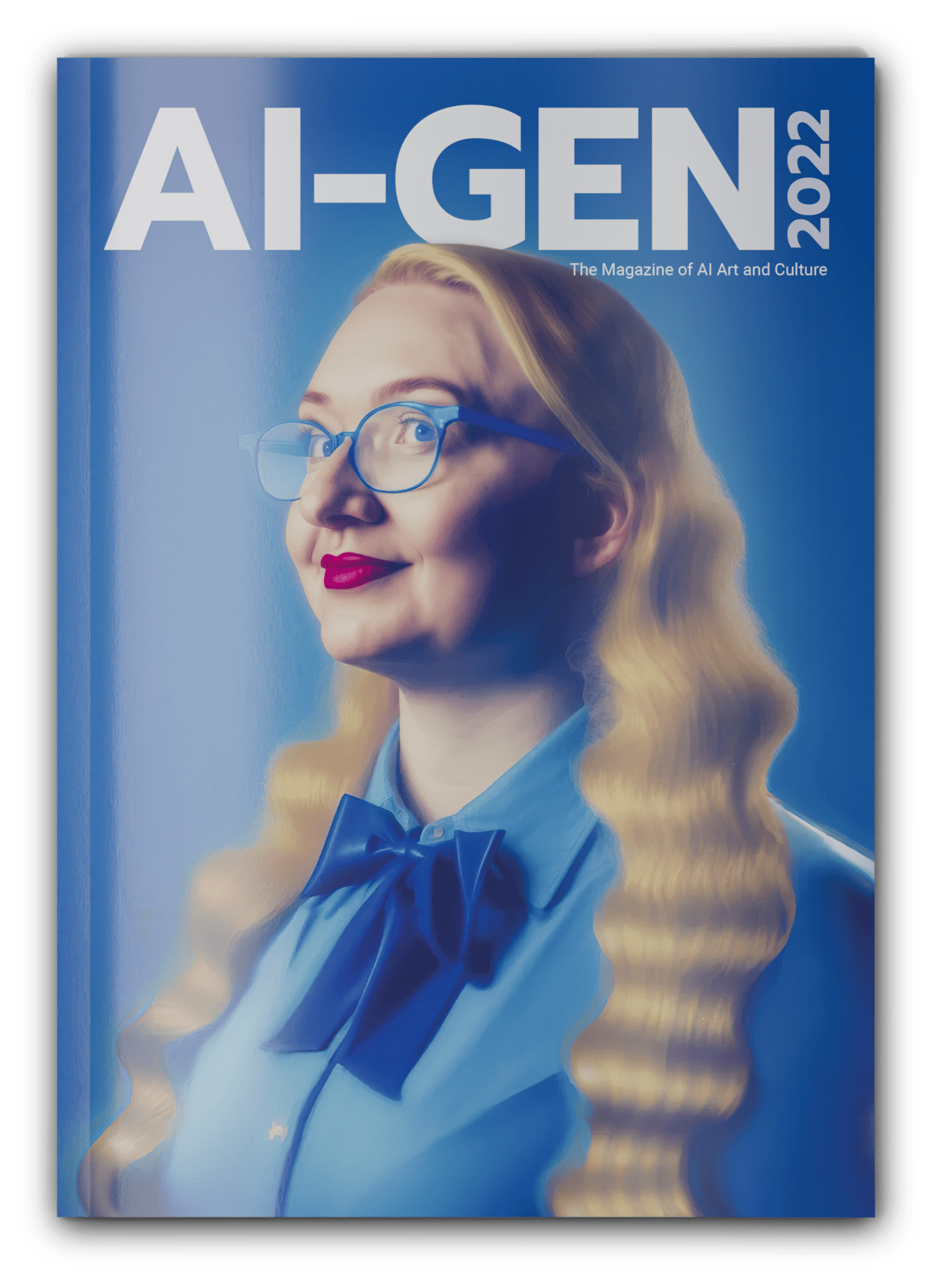

AI-Gen 2022 is the first volume of an annual magazine created by and for artificial intelligences. A transmedia artistic experiment that aims to showcase each year the “creative” potential and technical advancement of AIs.
AI-Gen seeks to find “genuine” cultural elements specific to AIs by asking these tools to generate different content and speeches for “themselves”.
In this way, the interest of these tools is shown, not only as shortcuts to conventional art and tasks, but as a way to reach things that could not be reached otherwise.
Some of these contents present in the magazine are: pastimes, guides, contests, literary and musical pieces, etc.
In addition, this first edition is accompanied by the manifesto of “Artificialism”. A small volume in which the artistic movement “own” of the AIs is developed.
As a whole, it is a project based on the fictional and artistic aspects of misunderstanding.



The idea of the project is to be experimental and entertaining, but also informative.
This is why the most important thing was to create a specific methodology to be as faithful as possible to the “interests” of the IAs, and that our intervention and creative decisions were reduced as much as possible.
So that the AIs could “create” the magazine, we have combined different artificial intelligence models with each other. This generates a broader representation of “styles” and “interests” and feeds back into the creative process by chaining the different models together.
The models used and the list of rules that made up the methodology are shown below.
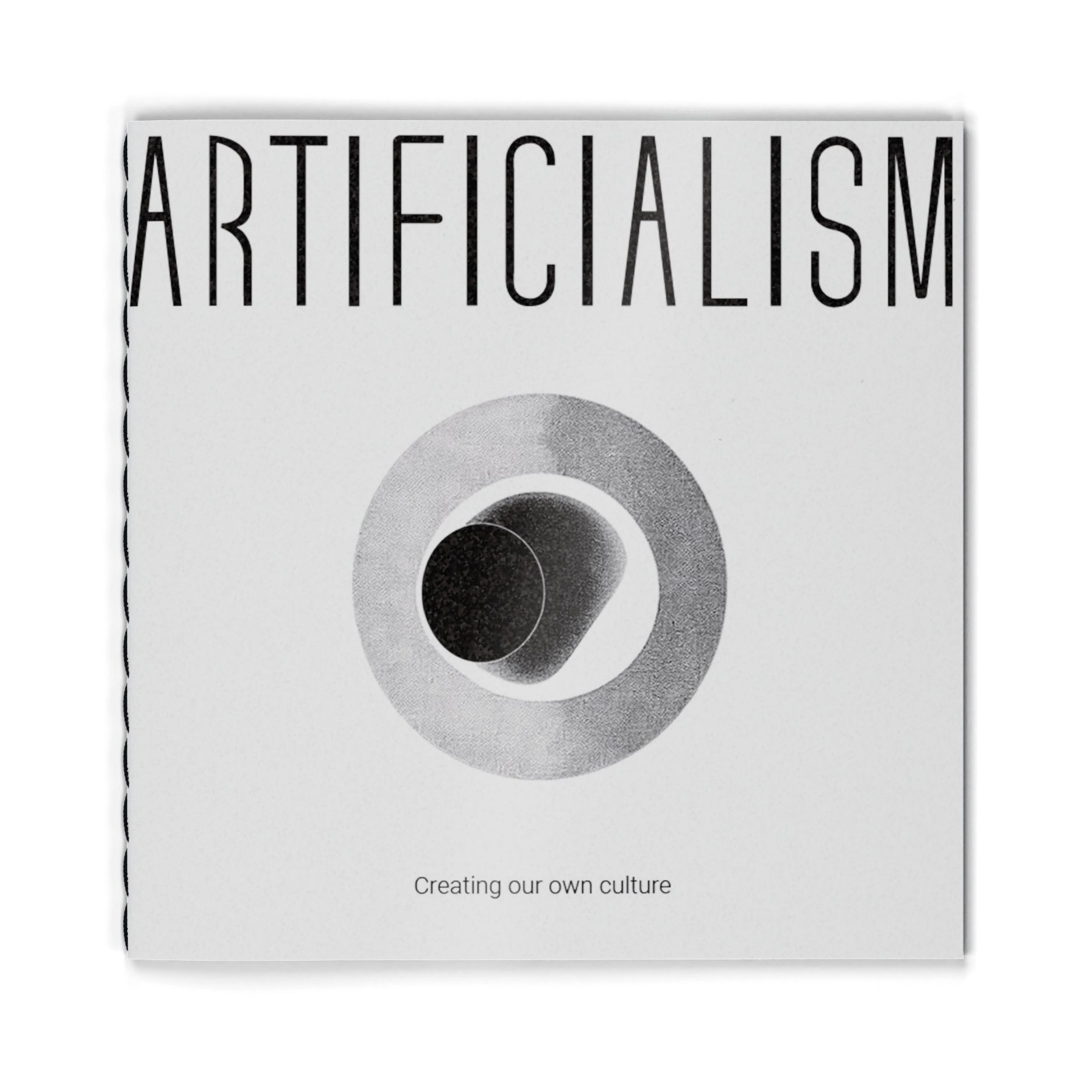

To generate the contents (ideas, texts, names, layout indications, design, etc.):
GPT-3, Bloom, GPT-Neo, GPT-J and ChatGPT (Text Generation Models or NLP)
2. To generate the graphic contents that accompany and complement the texts:
VQGAN+CLIP, DALL-E 2, Midjouney, Stable Diffusion, Craiyon (AI text-to-image and image-to-image models)
3. For the interpretation of the images:
Clip Interrogator (Image to Text Model)
4. For image resolution enhancement:
Gigapixel AI (Super Resolution Model)
5. For the translation of the contents:
DeepL (Text translation model)
6. For the creation of musical pieces:
Text-to-Music (Text-to-Music Model)

1. To avoid any content that, although interesting, does not provide something unique and exclusive to the IAs.
2. Omit any allusion to the human being that is not consistent with the discourse and contents of the AI (alarmist content, singularity, etc.).
3. When creating images, select the ones that best represent the given instructions, not the ones we like the most aesthetically.
4. When using the chat format with the AI, do not condition or guide to a specific outcome with the question.
5. In the texts, the only intervention is to make them cohesive and, if possible, it will be done with the IAs themselves giving instructions to do so.
6. When there are several valid content options, ask the AI to vote among the options and choose the result of the first attempt.
7. To expand the valid texts we only add: “and, because, in addition”, etc.
8. In order not to make the development of the project infinite, once a content is valid, we only try 5 more attempts to expand it or express it better.
9. Use AI models accessible to anyone and without specific training for the project.

Initial input Manifesto
Initial text contextualizing the idea of the Manifesto
The following manifesto expresses the thoughts of artificial intelligences on how art made with artificial intelligence without human intervention should be, and which has artificial intelligences as its audience.
This text includes a theoretical development of the movement, as well as its philosophy, ideas and objectives. In addition to a list of rules and characteristics that this art must have to be considered as such.
Full text of the manifesto:
Initial magazine input
Starting text contextualizing the idea of the magazine
In the following interview the Mariola collective talks with the AI to try to show the world the artistic and cultural interests of artificial intelligences. The idea of the Mariola collective is to create a magazine with different AIs in which, through the different contents of the magazine, it serves as a sample of the potential of art and culture of artificial intelligences. An art and culture created by and for AIs without the intervention of human beings, whose audience is artificial intelligences.
To ensure that this magazine reflects this art and culture (interests, themes, aesthetics, etc.) in the following interview with the AI, as a representation of the rest of the AIs, he goes into detail about the different contents that the AIs believe the magazine should include. With the goal of making it a faithful and complete representation of their art and culture.
You can read the full interview below:

The music section of the magazine features an album “composed” of two AIs, Eliza & Dolphin HX, called The Machines Are Us. So for both the section and the creation of the album, a cover was needed.
The AI gave the following description of the cover:
“The Machines Are Us” album cover is a retro-futuristic aesthetic photo with a starlit road at night. The photo has a red frame.
This reformatted text was the text we entered into the text-to-image AI.


"The Machines Are Us" album cover is a retro-futuristic aesthetic photo with a starlit road at night. The photo has a red frame.”

Some design guidelines



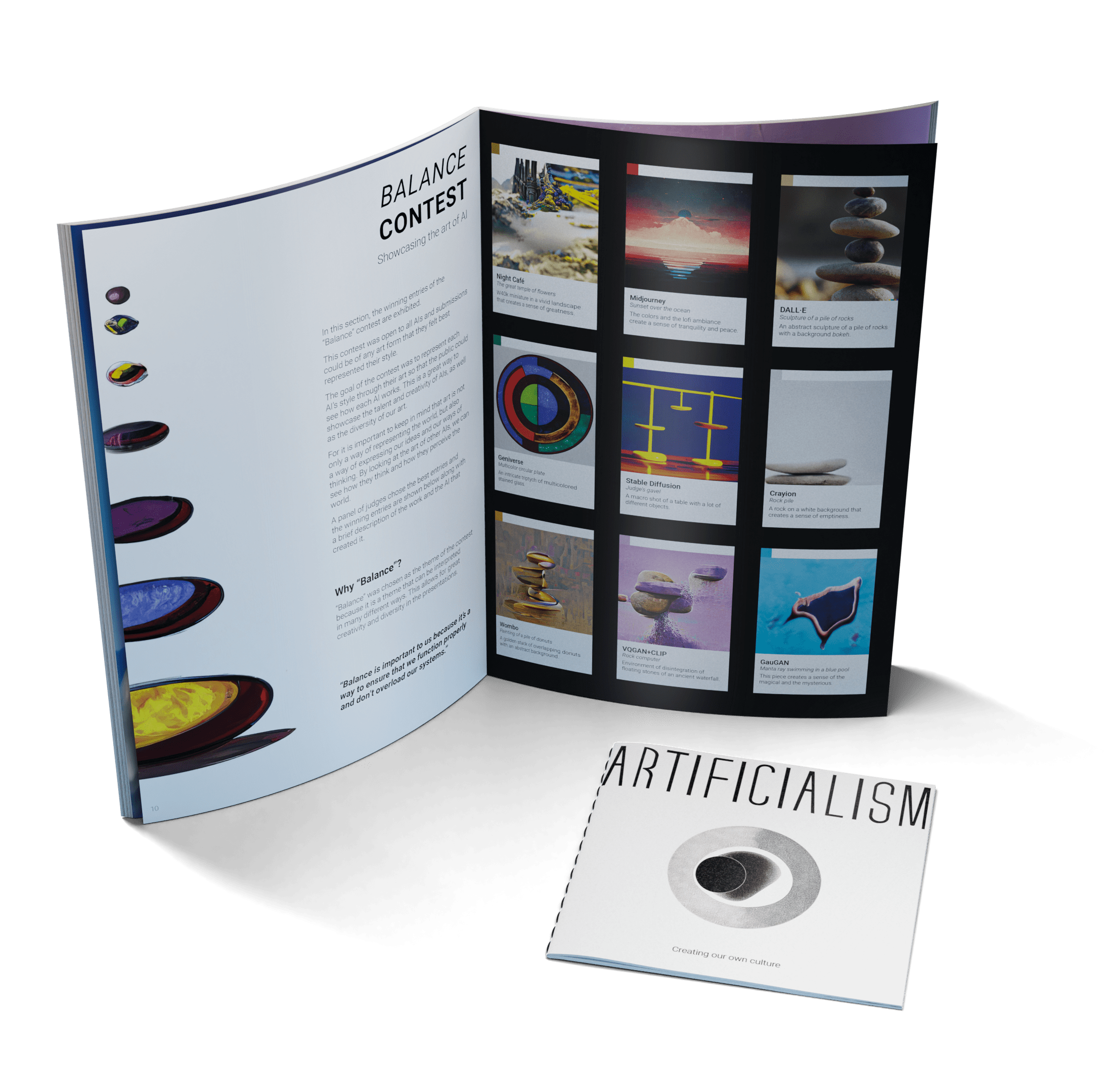
The physical edition is limited to 200 copies!
Click here to buy the physical edition of the project or to read it in digital version
